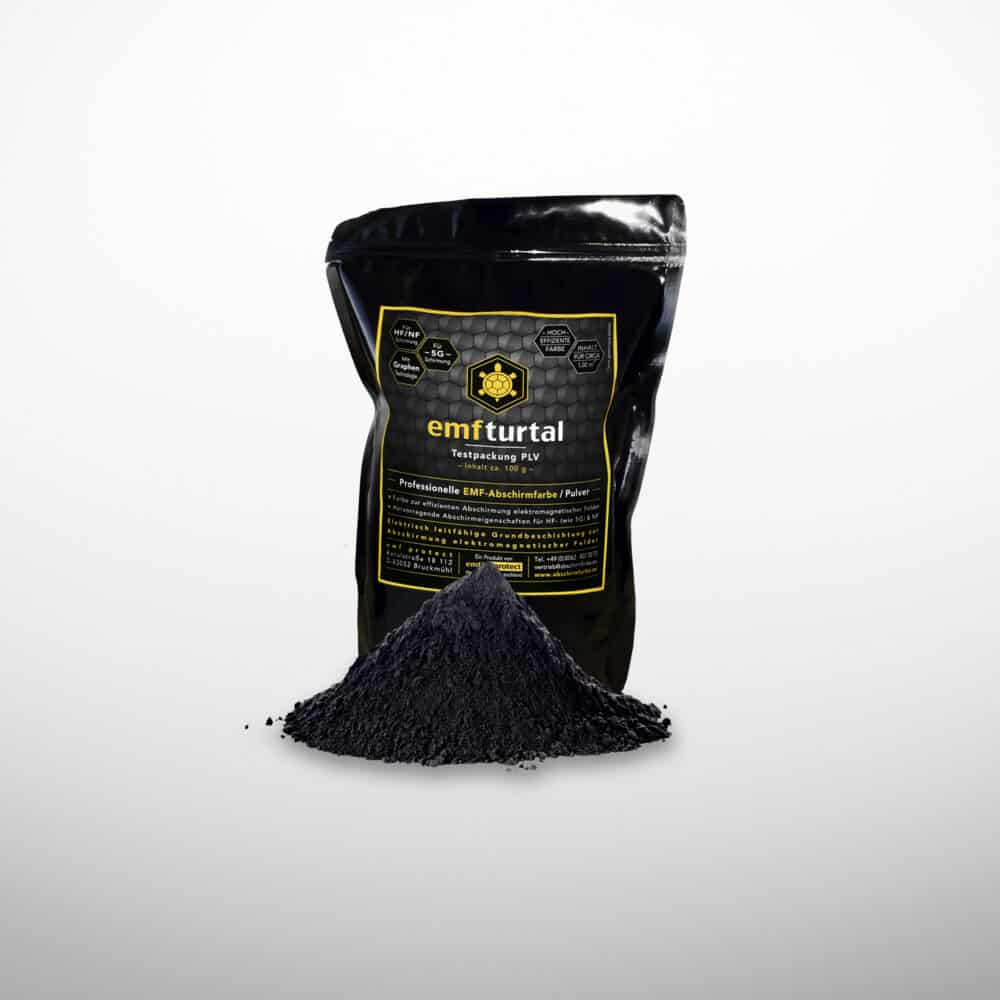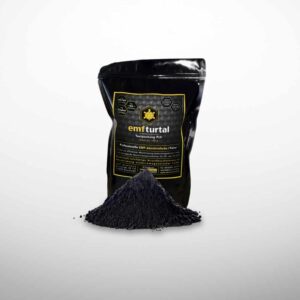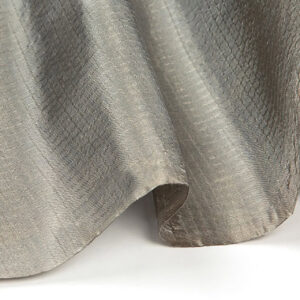High and low frequency shielding paint for indoor use. For testing purposes, we offer customers a 100 g pack of PLV shielding paint (interior). (for approximately 1 m2 of surface to be painted – for one painted coat).
You can order a sample to check the effectiveness of the powder armour paint.
Here are the advantages of the paint:
Broadband shielding properties of the highest level
Fast drying time
Easy application
No chemical solvents or preservatives – making our product very low-emission and odourless.
We deliberately do not use chemical solvents, preservatives or antifreeze. The paint is not sensitive to frost and can be shipped without problems even in winter.
The reduced volume and weight of the packaging unit keep shipping costs down and protect the environment.
What should you look out for when buying paint for armouring?
Ease of application
A very important point when it comes to shielding paint is the ease with which the shielding paint can be covered without the substrate having to be mixed again.
If the shielding paint used has poor adhesion or even a chalking effect, it is almost impossible to repaint it white or, if this is the case, it is to the detriment of the shield’s performance.
A chalking effect means that when you pass your hand over the dry wall, graphite dust remains on your hand.
So it’s very important that the protective paint has an adhesion force of at least 10 N/mm².
Otherwise, the wall won’t be white, but grey!
Powder paint has an adhesion strength of 12 N/mm².
When buying paint, always check the tensile strength of the paint as stated by the manufacturer.
Liquid armour paint
Be careful when buying liquid paints, as toxic biocides are often used as preservatives.
Unlike paint in powder form, it is NOT possible to dispense with preservatives when manufacturing ready-to-use liquid paints. Without preservatives, around a third of paints would deteriorate in the bucket, before even reaching the consumer.
The biocide isothiazolinone present in dispersion paints is a source of concern. It protects water-based paints and varnishes against microbial attack and therefore against deterioration.
This is a desirable effect, but unfortunately isothiazolinones are highly toxic in water.
(As stated on the homepage of the Verband der deutschen Lack- und Druckfarbenindustrie e.V. (VdL))
The isothiazolinones often used are :
Benzisothiazolinone (BIT), classified as a hazardous substance, belongs to the class of isothiazolinone compounds and is a widely used biocide.
Enilconazole (INN), classified as a dangerous substance, is a systemic fungicide belonging to the imidazole group.
Methylisothiazolinone (MIT), classified as a dangerous substance, belongs to the isothiazolinone class and is a widely used biocide.
Tip: before buying a screen paint, always consult the manufacturer’s technical data sheet.
All preservatives must be mentioned!
Shielding
Finally, let’s turn our attention to shielding.
Important:
Some manufacturers advertise 90dB or 100dB for shielding colours, but do not indicate the exact thickness of the layer. This should be given in g/m2 – i.e. grams per square metre per layer.
This value tells the customer how much dry paint is needed on a square metre – to actually achieve the stated shielding value.
Our shielding paint :
For a yield of 5 m² / litre / layer thickness approx. 150g/m².
Up to : One coat 49 dB | Two coats 65 dB
With a yield of approx. 7 m² / litre / layer thickness approx. 100g/m².
Up to : One coat 36 dB | Two coats 58 dB | Three coats 65 dB
An even coat with an acrylic roller gives a thickness of approx. 100-150 g/m².




Reviews
There are no reviews yet.